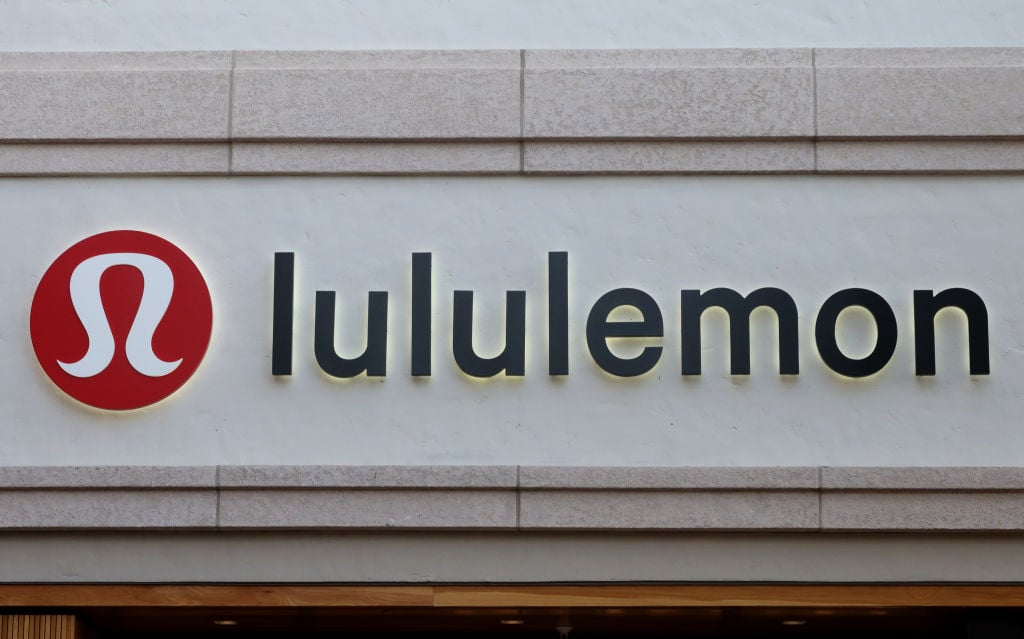Lululemon (LULU +2.52%) will soon unveil its much-anticipated third-quarter earnings. With its stock up about 90% year to date, athleisure competitors and shareholders will look to this latest report to see if the company can continue its upward trend.
Let's set the stage for the release and address the biggest questions to be answered.

Image Source: Getty Images.
Frame the market size
Before digging in, let's get a sense of the size of the opportunity these companies are battling over. According to Grand View Research, the global athleisure market was valued at $300 billion in 2018 and is expected to continue growing through 2025, driven by "rising awareness regarding physical fitness and personal grooming among millennials" and "apparel cultural shift in the workplace at a global level." Additionally, the report states that more than 65% of that $300 billion belongs to the premium athleisure product segment.
You've got a large market expected to continue growing with the largest segment being exactly what Lululemon specializes in.
So will e-commerce growth continue?
| E-commerce Revenue | YOY Change | % of Total Revenue | |
|---|---|---|---|
| Q2 2019 | $217.6 million | 30% | 24.6% |
| Q3 2018 | $189.4 million | 44% | 25.3% |
Data source: Lululemon. YOY = year over year.
As you can see, e-commerce sales have steadily put up impressive figures. For the company to stay on pace with last year's growth of nearly 50%, the company will need to produce e-commerce revenue of approximately $273 million in its fiscal third quarter.
How is the company working to keep up this level of growth? First, the company is improving the quality of the e-commerce experience, particularly through enhancements to its search and browse functionality, upgrades to the digital checkout process, and investments in data collection to help provide a more tailored approach for shoppers. Lululemon's buy online and pick up in store fulfillment option has also been integrated in almost every store in North America.
In the company's most recent earnings call, Executive Vice President of the Americas and Global Guest Innovation Celeste Burgoyne said in response to the full roll out, "So far, the favorable response from guests shows how much they appreciate the flexibility and efficiency of this service."
If Lululemon can continue to leverage its digital channel by making the online shopping experience easier and more engaging, they'll continue to be leaps and bounds ahead of any fears of a retail grim reaper.
The brick-and-mortar transformation
Unfazed by a retail slowdown, Lululemon has opened 45 new company-owned stores in the past year, bringing the total count to 460. This includes a new experimental store in Chicago where guests can shop, eat, and work out. As 66.1% of total revenue last quarter came from in-store sales, it's important to monitor growth in the largest area of the business.
| Company-Owned Store Revenue | YOY Change | Comparable-Store Sales Growth | |
|---|---|---|---|
| Q2 2019 | $583.8 million | 20% | 11% |
| Q3 2018 | $476.9 million | 12% | 7% |
Data source: Lululemon. YOY = year over year.
In the five-year growth plan the company shared in April, it highlighted enhancing the guest experience as one of the three pillars of the growth strategy. With respect to brick-and-mortar locations, this includes, "events, dynamic new store formats, and its innovative membership program that fosters connections among guests." The company is remodeling current stores and opening up new ones that don't all fit the same mold. These different formats include pop-up locations open for just a few months, two different plans for medium-sized stores, and massive experience-driven stores like the one launched in Chicago.
By the end of 2023, Lululemon wants roughly 10% of its total store base to be like the new concept in Chicago. The company is also remodeling many of its outperforming 3,000 square foot stores into larger 5,500 square foot facilities. Last quarter, the company completed eight of these remodels.
Looking abroad
Beyond these two channels, investors should also pay close attention to Lululemon's international growth. Of the 45 new company-owned stores, 16 opened in Asia, four in Canada, eight across Europe, three in Australia/New Zealand, and the remaining 14 in the U.S. Currently, 36.5% of company-owned stores are located outside of Lululemon's home market (22.6% outside of North America). Second-quarter revenue outside North America was $115.9 million, an increase of 34% year over year.
Some of the strongest international growth last quarter was in the Asia-Pacific region where revenue was up 33%, including 68% market growth in China. With a strong focus on global expansion expressed in the most recent earnings call, investors need to make sure to look at international metrics in the coming earnings release to gauge the success of this expansion.
Management previously guided for third-quarter revenue in the range of $880 million to $890 million, with diluted earnings per share coming in at $0.90 to $0.92. A solid report this week should reassure investors that Lululemon has strong momentum heading into the holiday shopping season and should spell a bright future for the company in the new year as the business expands across multiple fronts.






